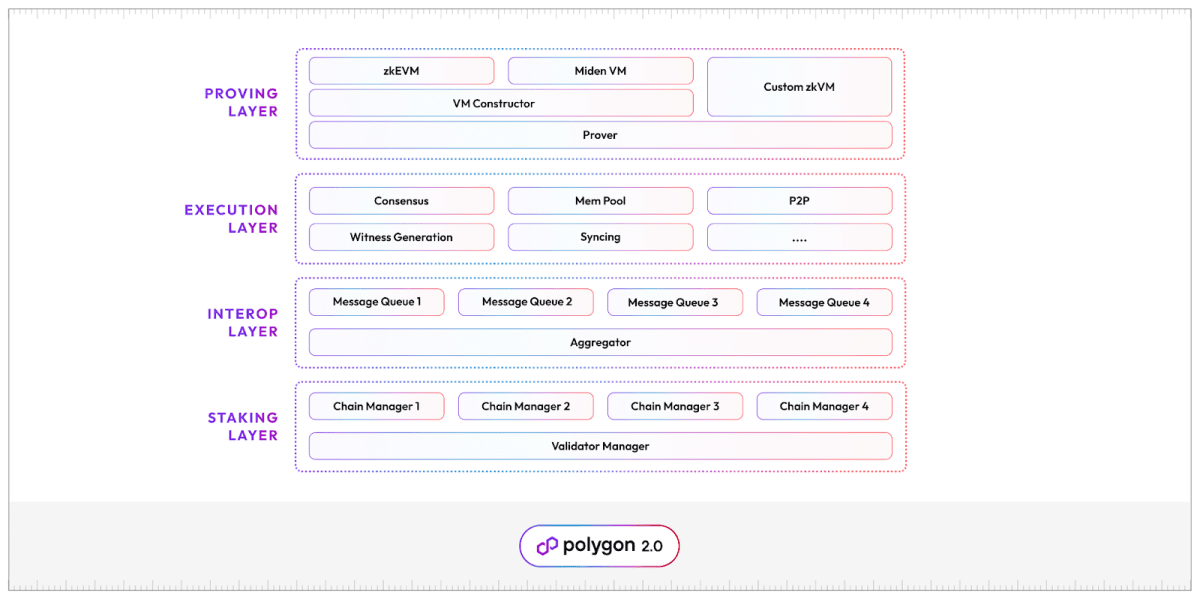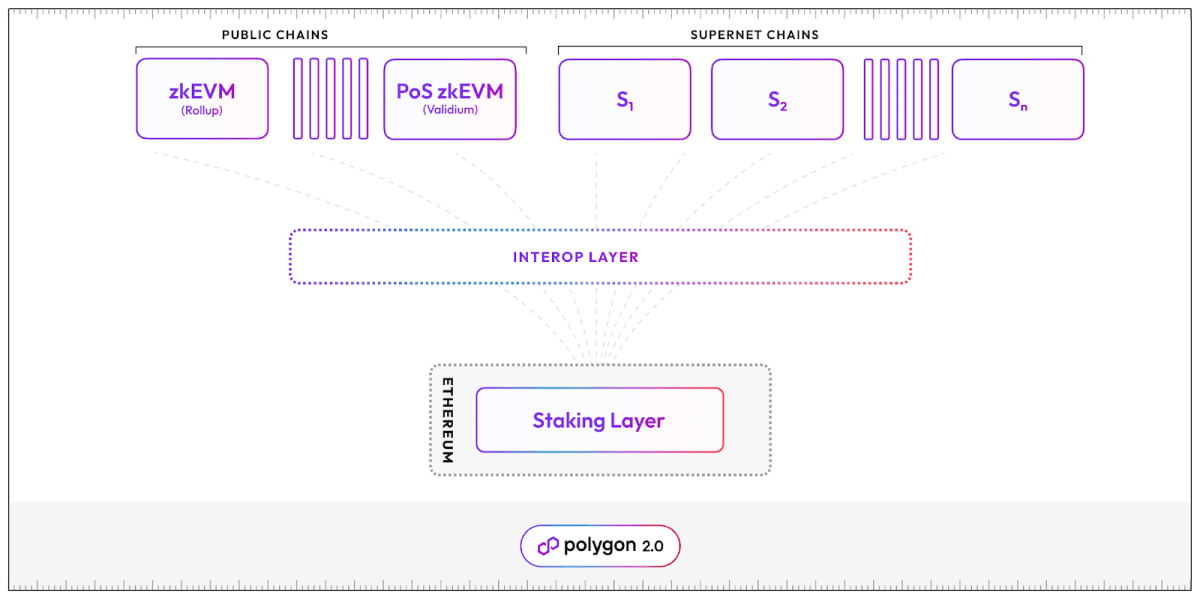Polygon 2.0 Architecture: Unleashing Unlimited Scalability

Polygon Labs has announced the possibility of a protocol architecture update, which could theoretically provide limitless scalability and cohesive liquidity for its internal networks.
Developers are proposing a structure composed of multiple parallel layers. They've cited the TCP/IP (Internet) data transmission model, with its several layers - channel, network, transport, and application - as an example. Implementing this kind of approach to a decentralized network might resolve the chronic and costly issue of blockchain scalability, simplify the incorporation of future updates, and provide efficient solutions for tasks tied to individual subprocesses. Hence, the developers have carefully designed four levels for the Polygon protocol: Staking, Interop, Execution, and Proving.

Polygon 2.0 protocol architecture. Source: Official Polygon Labs website.
Staking
Most users are likely already familiar with the functions at this level, many of which are accessible in the current structure. This level will operate on a Proof-of-Stake (PoS) algorithm with an in-built staking model, its native MATIC token, and a decentralized pool of validators. Integrating this level into the proprietary network based on Polygon Supernets won't require developers to make additional adjustments, allowing them to concentrate on other functions. The team plans to execute this level using two smart contracts on Ethereum:
1. Validator Manager: Oversees the pool of validators (maintains registry, handles staking and restaking requests, and manages violation events).
2. Chain Manager: Supervises the validator sets for individual chains (establishes quantity, requirements, and penalties for violations).
Interop
This will ensure the safe exchange of messages between internal chains (Supernets, zkEVM, PoS zkEVM) within the Polygon ecosystem, creating a cohesive network for users. An aggregator will facilitate the processing of zero-knowledge proofs (ZK Proof), enabling swift and seamless atomic transactions of native tokens from any chain. This will also help reduce gas costs.

Interop layer structure. Source: Official Polygon Labs website.
Execution
This provides the capacity for internal Polygon networks to create blocks, exchange messages among validators, form consensus, manage the mempool, maintain transaction databases, and generate witnesses for ZK Proof validation. The team deems this level to be the most intricate, so they're suggesting employing existing options like Erigon – a restructured Ethereum architecture written in the Go programming language.
Proving
This will allow the generation of ZK Proof for both internal and external transactions on any Polygon chain. It includes a high-performance ZK-verifier, a builder (speeding up testing of computational mathematical models), and a state machine responsible for emulating the execution environment of the verified transaction. This level's design is aimed to enhance the efficiency of generating and verifying zero-knowledge proofs.
In Summary
In the near future, the Polygon team aims to share more in-depth details about the operation of each layer and the interplay among them. The update certainly appears promising, but the implementation could take a few months, even with the backing of the community. Hence, users and third-party developers should temper their enthusiasm and stay tuned for more significant announcements.

